Kilimanjaro, with its three volcanic cones of Kibo, Mawenzi, and Shira is an inactive stratovolcano in north-eastern Tanzania rising 4,600m from its base and is additionally the highest peak in Africa at 5,895m. While the volcano appears to be dormant on the inside, events on top of the mountain draw global attention. Its three summits of Shira, Kibo and Mawenzi are all of very recent origin. Much as the volcano stands alone, it is a part of an east-west belt of volcanoes stretching over Northern Tanzania.
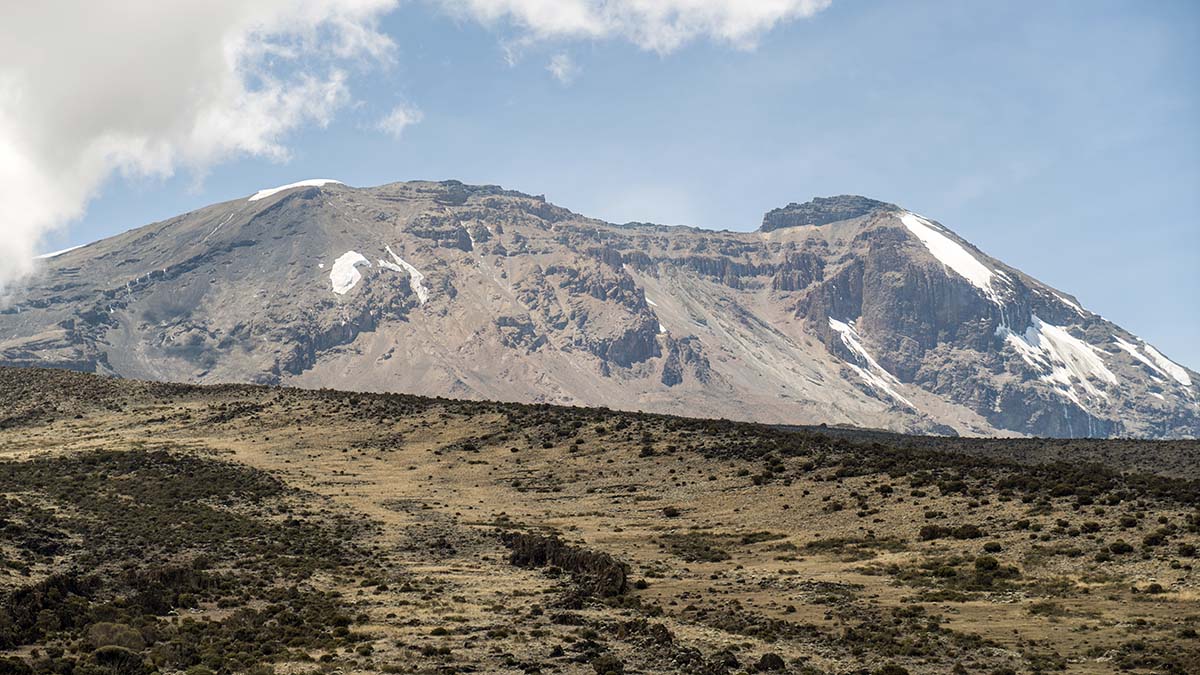
Mount Kilimanjaro is in the shape of a mountainous volcano; it is formed by material being thrown up by the volcano vent, which then piles around the vent in the shape of a cone. Mount Kilimanjaro is made up of tephra, i.e. it has a cinder cone. They are made up of blobs of congealed lava and particles. When the mountain erupted millions of years ago, the gas-charged lava would be blown violently into the air, then breaking into smaller fragments which would solidify and fall as cinders. This left Mount Kilimanjaro with a bowlshaped crater. It is not uncommon for a stratovolcano such as Mount Kilimanjaro to have experienced explosive eruptions. The lava from the mountain is viscous so it cools down before it spreads very far. The lava’s viscosity also helps explain why Mount Kilimanjaro has relatively small crater formations. The rock on the mountain is felsic and thus has high levels of silica, especially tephratic silicate.
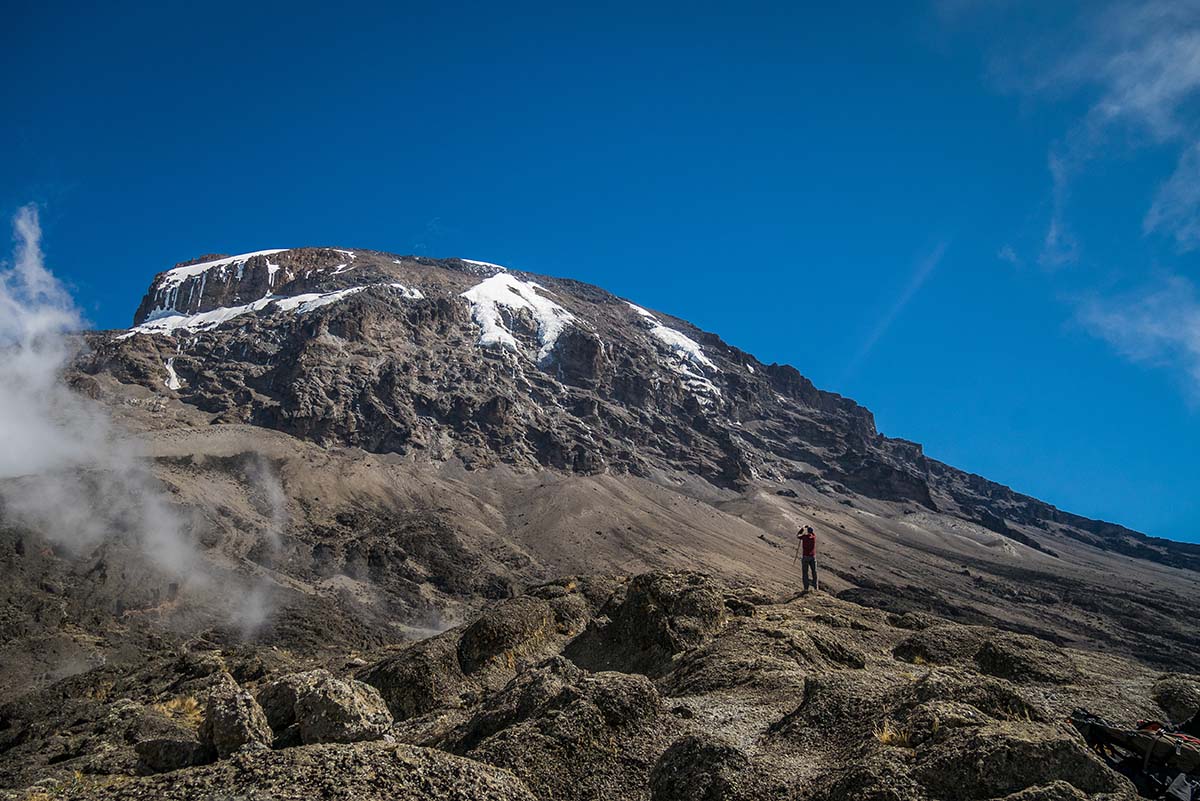
Mount Kilimanjaro is in the shape of a mountainous volcano; it is formed by material being thrown up by the volcano vent, which then piles around the vent in the shape of a cone. Mount Kilimanjaro is made up of tephra, i.e. it has a cinder cone. They are made up of blobs of congealed lava and particles. While it is inactive, Kilimanjaro has fumaroles that emit gas in the crater on the main summit of Kibo. Several collapses and landslides have occurred on Kibo in the past, one creating the area known as the Western Breach. Scientists concluded in 2003 that molten magma is just 400m below the summit crater. The volcano is the highest in Africa and covers an area of 388,500 ha. Although the volcano stands alone, it is a part of an east-west belt of volcanoes stretching over Northern Tanzania. It has three main concentric cones to the southeast in the mountain, but also has smaller parasitic cones. Also known as a satellite cone, the main vent is blocked by cooled solidified lava, and the lava is then forced out through the sides of a volcano under immense pressure. To the west side of the mountain is the peak Shira (3,962 m or 12,999 ft), of which only the southern and western rims remain. The most recent summit is Kibo (5,891.8 m of 19,330 ft) which was last active during the Pleistocene. There are still even fumaroles. Even though there haven’t been eruptions for millions of years, there are openings near Kibo in the Earth’s crust which emits steam and gases.
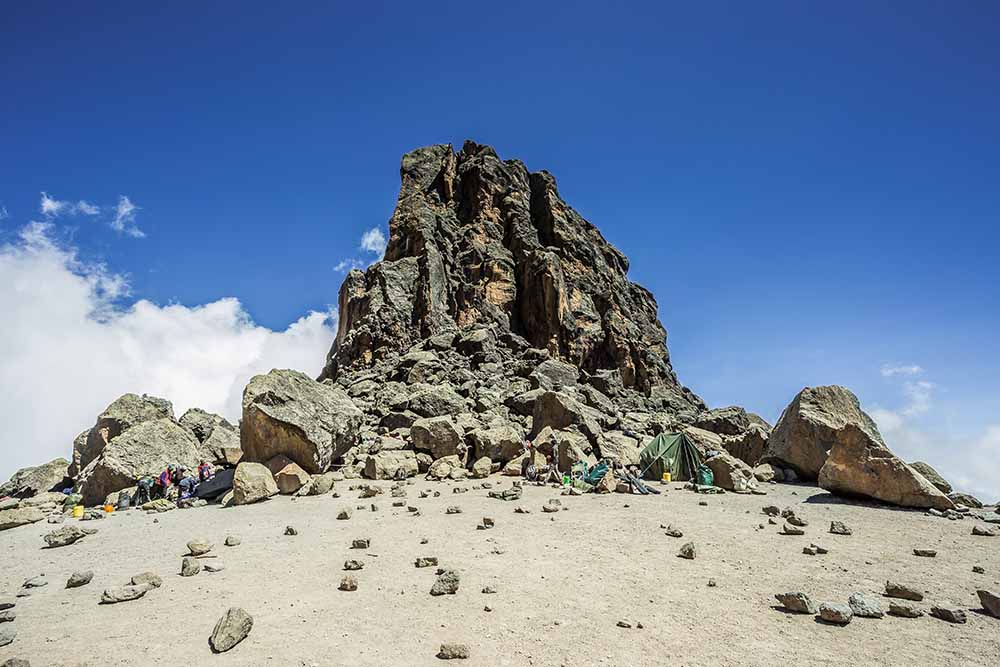
Kilimanjaro has a large variety of forest types over an altitudinal range of 3,000 m containing over 1,200 vascular plant species. And as a result, the mountain has unique vegetation for instance the water holding cabbage in the tussock grassland and other plants like this all adapted to living in alpine conditions. Montane Ocotea forests occur on the wet southern slope. Cassipourea and Juniperus forests grow on the dry northern slope. Subalpine Erica forests at 4,100 m represent the highest elevation cloud forests in Africa. However, forest relicts in the deepest valleys of the cultivated lower areas suggest that a rich forest flora inhabited Mt Kilimanjaro in the past, with restricted-range species otherwise only known from the Eastern Arc Mountains. There is a low degree of endemism on Kilimanjaro a result from destruction of lower altitude forest. The highest point on the mountain is the southern rim of the outer crater. Moreover, between Kibo and Mawenzi is the Saddle, in which it contains high altitude tundra. This type of vegetation forms at high levels of altitude because tree growth is hindered by low temperatures and short growing seasons. There is a wide range of vegetation despite being at high altitude such as dwarf shrubs, grasses, mosses and lichens.
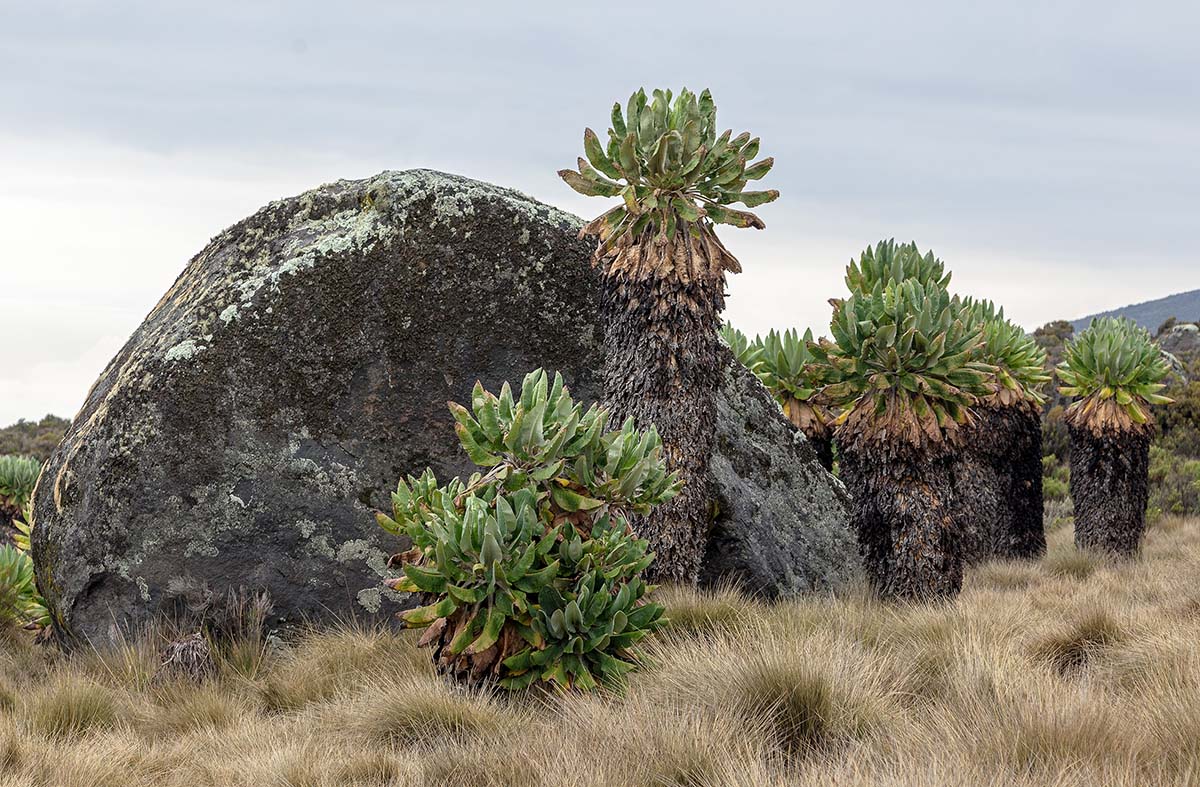
Preparation is half the trip, we say! To succeed we need to bring the right stuff to the peak – and only that
If you are in doubt, please feel free to ask, but we recommend that you read the following before going with us.
If you find it difficult to bring all the stuff, please feel free to contact us. We might be able to rent it to you.
1. Sunhat 5$
2. Sunglasses, 10$.
3. Sunscreen (high factor 35-40 essential) you must buy
4. Head torch 15$, Spare batteries must buy.
5. Thermal hat 10$
6. Balaclava 5$
7. Bandanna 5$
8. Thermal top and bottom at least three pairs each 8$ per each
9. Fleece – two pairs 10$ per item
10. Lightweight trousers two pairs or more (No jeans) 15$ per each
11. Gloves (Inner gloves and outer shell) 5$ per each
12. Rain trousers and rain jackets 15$ per each
13. Summer wear (T-shirts and shorts) 5$
14. Sleeping bag 20$ and Sleeping bag liner 7$
15. Water bottles – at least two but, Camel Bags system is very essential 5$ per each
16. Hiking boots 20$
17. Socks – at least 6 pairs 5$
18. Medication (your own first) must buy.
19. Day pack 30$
20. Soft bag or Rucksack 5$
21. Small towels must buy.
22. Gaiters 10$
23. Poncho 15$
24. Walking sticks 10$ per pair.
1. Rain gear (jacket and trousers)
2. All of your valuables (passport, money etc.)
3. Medical kit
4. Power-bars
5. Water bottles loaded with water
6. Walking poles
7. Toilet paper and plastic bags for packing used paper to the next camp
8. Camera, accessories, cards, charger
9. Sweets
10. Anything which you may think will be very useful to you like MP3-player and iPods as well as diary or reading materials
1. Antiseptic cream and plasters for small cuts and grazers
2. Bandages
3. Compeed for blisters
4. Anti-malaria
5. Ibuprofen/Paracetamol/Asprin
6. Re-hydrating powders
7. Lip salve or chapstick or Vaseline
8. Lozenges
9. Any current medication you are on
10. Diamox
11. Waterproof bag etc.
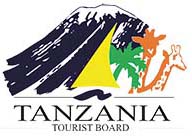



© Copyright 2024 Get Climb and Safari. All rights reserved. Design by TNT Factory
Talk to us